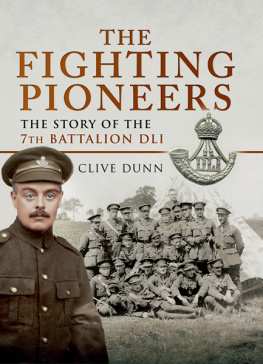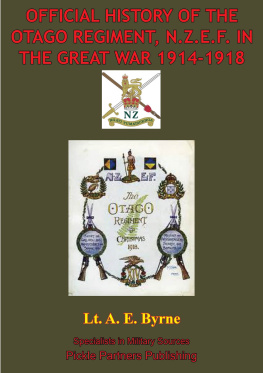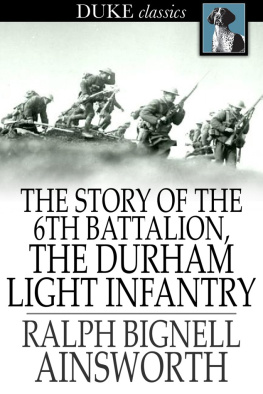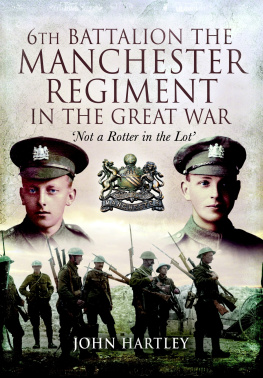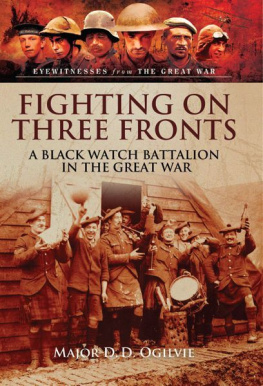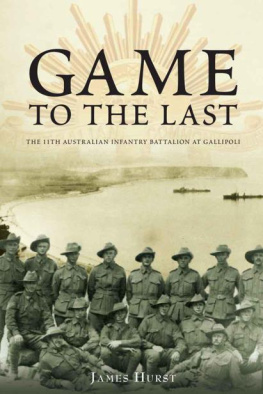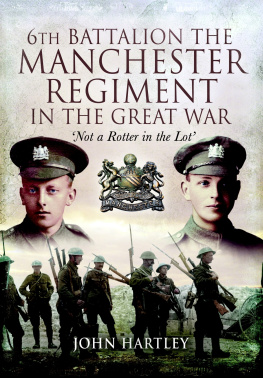Dedication
This book is dedicated to all men, of whatever rank, who served with the battalion during the Great War, and especially to my grandfather, Private Stanley Douglass, who ignited my interest, at a very early age, in the war with tales of his experiences.
First published in Great Britain in 2015 by
PEN & SWORD MILITARY
an imprint of
Pen and Sword Books Ltd
47 Church Street
Barnsley
South Yorkshire S70 2AS
Copyright Clive Dunn, 2015
ISBN: 978 1 47382 348 8
PDF ISBN: 978 1 47387 174 8
EPUB ISBN: 978 1 47387 173 1
PRC ISBN: 978 1 47387 172 4
The right of Clive Dunn to be identified as the author of this work has been asserted by him in accordance with the Copyright, Designs and Patents Act 1988.
A CIP record for this book is available from the British Library.
All rights reserved. No part of this book may be reproduced or transmitted in any form or by any means, electronic or mechanical including photocopying, recording or by any information storage and retrieval system, without permission from the Publisher in writing.
Printed and bound in England by
CPI Group (UK) Ltd, Croydon, CR0 4YY
Typeset in Times New Roman
by CHIC GRAPHICS
Pen & Sword Books Ltd incorporates the imprints of
Pen & Sword Archaeology, Atlas, Aviation, Battleground, Discovery, Family History, History, Maritime, Military, Naval, Politics, Railways, Select, Social History, Transport, True Crime, Claymore Press, Frontline Books, Leo Cooper, Praetorian Press, Remember When, Seaforth Publishing and Wharncliffe.
For a complete list of Pen and Sword titles please contact
Pen and Sword Books Limited
47 Church Street, Barnsley, South Yorkshire, S70 2AS, England
E-mail:
Website: www.pen-and-sword.co.uk
Contents
Preface
T his is the story of the 7th Durham Light Infantry (DLI) from the beginning of the volunteer movement and formations raised in Sunderland to its first association with the Durham Light Infantry, when it became the 3rd Volunteer Battalion. With the creation of the Territorial Force in 1908 the battalion was redesignated as the 7th Battalion. It went to France in April 1915 with the rest of the Northumbrian Division (which later became the 50th Division), seeing action almost immediately at the Second Battle of Ypres. In November 1915 the battalion was chosen to become the divisional Pioneers not always the safe job as some thought and was sent back to the front line to reinforce the infantry brigades for the German offensives in 1918. During the war the 1/7th Battalion suffered 600 fatalities and the 2/7th Battalion suffered twenty-six. In 1920, when the Territorial Army was reformed after the war, it was re-raised in its original role as infantry. The story concludes on 10 December 1936, when the 7th Durham Light Infantry became the 47th (Durham Light Infantry) AA Battalion RE (TA), whose personnel went on to serve in the Second World War.
My interest in the 7th Durham Light Infantry started at an early age when I used to listen to the tales told to me by my grandfather, Stanley Douglass, who was a pre-war Territorial with the battalion. From there my interest in the First World War steadily grew, and in the Durham Light Infantry in particular. During the 1980s I interviewed a number of survivors from the battalion; sections from these interviews form part of the narrative.
It is now time to write the history of the Sunderland and South Shields Territorial battalion of the Durham Light Infantry.
Acknowledgements
M y thanks go to the Trustees of the Regiment for the use of photographs and extracts of diaries and letters of soldiers of the battalion, which are held by the Durham County Archives.
I am very much indebted to a pamphlet and a series of articles, prepared by Major Mark Storey for the Sunderland Echo, which cover the early years of the volunteer movement in Sunderland.
My thanks go to the staff at the Special Collections Department of Leeds University for helping me with the Liddle Collection and their efforts to locate the copyright holders of the papers of Private Wrigglesworth.
I would like also to extend my thanks to the Imperial War Museum for making every effort to contact the copyright holders for permission to use extracts from the papers of Sergeant A. Speight and Private W.G. Miller and for permission to use the photograph of the battalion at Reninghelst, near Ypres, in 1916.
I was able to take the photographs of the Boer War Memorial, which hangs at the Civic Centre, Sunderland, with the help of Trevor Stevens of the City Council, who graciously took time out from his work to arrange for the display cabinet to be opened.
I would especially like to thank the staff of the Durham County Archives, in particular Gill Parkes for her help and patience and the late Mr Malcolm McGregor for his assistance with the honours and awards to the battalion, taken from his book Honours and Awards to the Durham Light Infantry, which was printed for private circulation, and his records on the officers of the regiment, held at the Durham County Records Office.
My warm thanks go to Mr Peter Vaux the grandson of the late Colonel Ernest Vaux, who commanded the battalion for most of the war for his help with obtaining material and photographs.
My especial thanks go to John Sheen for the prompt to write this book and for his encouragement and support during the writing thereof.
Lastly, and most importantly, to my wife, Gillian, for her patience and support, for her willingness to accompany me across the region to visit museums and archives and for her help with the proofreading.
Chapter 1
The Beginning
S underland has had a long and proud affiliation with the volunteer movements, whose members gave their services to help defend the country. The history of Sunderlands volunteers can be traced back to 1794, when the Loyal Sunderland Volunteers, or Sunderland Loyal Volunteers, were raised during the Revolutionary Wars, when the threat of invasion by France was real. Robert Hayton, a local wealthy coal fitter, raised the volunteers for the purpose of manning and defending the batteries at the entrance of Sunderland harbour. The unit was not officially recognized by the War Office until 1797. Prior to that date the gentlemen concerned hired the services of a regular sergeant to teach them the use of arms.
The Loyal Sunderland Volunteers consisted of three companies of 100 men each. The commanding officer, known as a major commandant, was Major Robert Hayton. He was assisted by two captains, one by the name of MacIntosh, a coal fitter, and the other called Bailey, a solicitor. In addition there was also Lieutenant Irvine and Lieutenant William Wilson. The headquarters of the Volunteers were at Mr Davisons sail loft in West Wear Street, Sunderland. It is believed that parades took place in Villiers Street and drills on the Town Moor, with ranges at Hendon Beach.
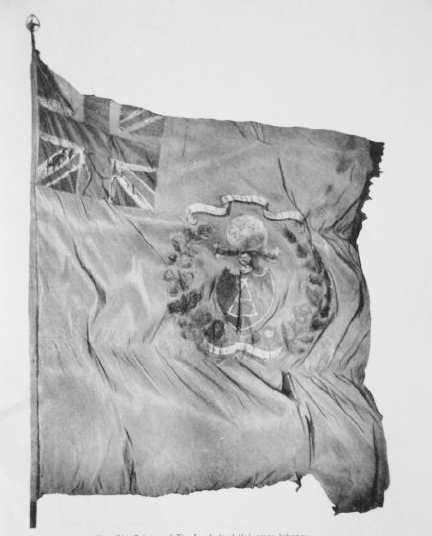
Colours of the Sunderland Rifle Volunteers.
It was also in 1797 that colours were presented to the corps on 5 June by Mrs Russell, the wife of William Russell. These colours were returned to her in 1802, when the corps was disbanded because the Revolutionary Wars had come to an end with the Treaty of Amiens, and were stored in Brancepeth Castle. They were thought to be there in 1912, but it is not known where they are now.
As the corps was a volunteer formation, and was raised by local gentlemen and did not initially have official recognition, it had to raise its own funds for the purchase of gunpowder for musket practice, as well as other necessaries. A subscription list was opened, which had amongst its names some of the most prominent people of the town and county. The list was headed by no less than the Bishop of Durham, the Dean of Durham, the Edens and William Wilson, the wealthy owner of Brancepeth Castle, nephew of William Russell. The corps used to march to the tune of
Next page
